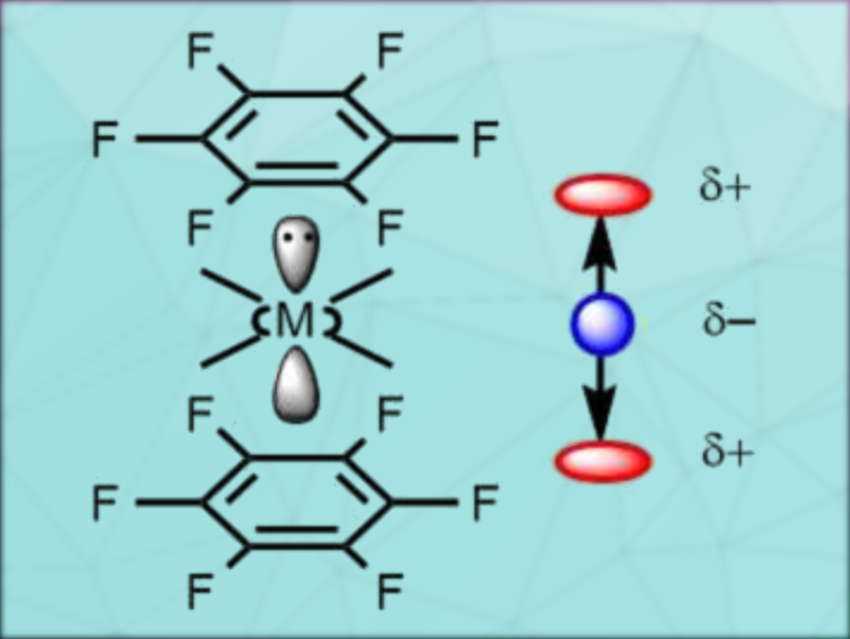In 1973, the Nobel Prize in Chemistry was awarded jointly to E. O. Fischer and G. Wilkinson for their pioneering work on organometallic sandwich compounds. In these metal complexes, a positively charged metal center is placed between two negatively charged planar organic molecules.
However, the roles can also be inverted: Vadim Y. Kukushkin, Saint Petersburg State University, Russia, and colleagues have synthesized reverse sandwich complexes. The systems have formally opposite charges from “normal” sandwich compounds, i.e., a negative charge on the metal center and positive charges on the organic fragments.
The researchers co-crystallized perfluoroarenes with square-planar platinum(II) and palladium(II) species featuring anionic porphyrinate or diketonate ligands. They observed the formation of a reverse sandwich structure (pictured) with the porphyrinate ligand. The diketonate reagent led to a 1:1 adduct that forms an “infinite” stack.
A theoretical study verified the proposed bonding. It features π-hole⋅⋅⋅MII interactions, where the MII center (M = Pt, Pd) acts as a nucleophile.
- Reverse Arene Sandwich Structures Based upon π-hole⋅⋅⋅[MII] (d8 M = Pt, Pd) Interactions, where Positively Charged Metal Centers Play the Role of a Nucleophile,
Anton V. Rozhkov, Mariya A. Krykova, Daniil M. Ivanov, Alexander S. Novikov, Anna A. Sinelshchikova, Marina V. Volostnykh, Mikhail A. Konovalov, Mikhail S. Grigoriev, Yulia G. Gorbunova, Vadim Yurievich Kukushkin,
Angew. Chem. Int. Ed. 2019.
https://doi.org/10.1002/anie.201814062




